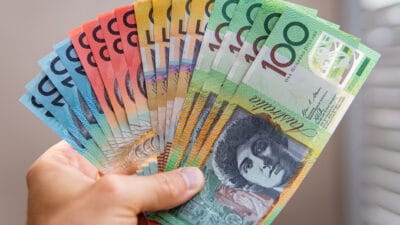The ASX share market has proven an excellent way to grow wealth. In this article, let's explore what sorts of metrics are worth looking at when it comes to stock market investing.
Over past decades, the ASX share market has typically produced total returns of around 10% per annum. That's an average – sometimes the annual return could be a 15% rise, sometimes it could be a 5% rise, and occasionally there are years when share prices fall.
If a share portfolio were to rise by 10% per annum, the portfolio value would double in less than eight years, though no one can say for sure what future returns are going to look like – the average could be stronger or weaker than 10%.
One strategy is for investors to track the returns of the share market as a whole by simply buying an exchange-traded fund (ETF) that follows a benchmark index. Examples might be the Vanguard Australian Shares Index ETF (ASX: VAS) that tracks the S&P/ASX 300 Index (ASX: XKO) or the iShares S&P 500 ETF (ASX: IVV) that follows the S&P 500 Index (SP: .INX).
Investing in those sorts of ETFs is likely to achieve satisfactory long-term returns. But I think there's space for individual ASX shares to comprise part or even all of an investment portfolio.
Some people have never invested because they don't have the right information to know what to look for. Here's why I think these metrics are good ones to research.
Revenue growth
For me, a key part of the picture is knowing how quickly the business is growing.
An ASX share that grows revenue at a pleasing pace gives itself a natural boost to be able to grow profit. Profit margins don't even need to grow – if a company grows revenue by 5% and delivers the same profit margins, then this helps the company grow profit by 5%.
Highly elevated growth rates probably won't last forever, but I like the look of companies that can keep growing revenue thanks to exposure to a tailwind (such as ageing demographics), a strong brand, or there is a new product/service that has a long growth runway.
When we look at some of the strongest-performing ASX shares over the years, like WiseTech Global Ltd (ASX: WTC), REA Group Ltd (ASX: REA) and Xero Limited (ASX: XRO), they have all delivered very good revenue growth. However, there's more to good companies than just growing revenue.
Earnings per share growth
The job of a company is to make a profit, so I want to see that is actually happening (or at least good progress towards profit is being made).
Net profit after tax (NPAT) growth is a good indicator, but I think earnings per share (EPS) is even more important because it shows how much profit the company is making for each share(holder).
ASX companies could decide to acquire a bunch of businesses and pay for them with new shares. That may lead to NPAT growth, but EPS may not change at all, so the share price may not rise because it hasn't improved the profit generation of each individual share.
As Warren Buffett's investment teacher, Benjamin Graham, once said: The market is a voting machine in the short term, and in the long run, it's a weighing machine. In other words, shares can rise in the short term if they're popular, but it's the underlying performance of the company that will drive the share price higher over time.
A business that's growing EPS can deliver a rising share price and perhaps pay (growing) dividends. I like to look at profit estimates on Commsec to see whether EPS is expected to rise in the coming years. But, EPS growth isn't the only important thing to deliver good returns.
Net cash?
The world has changed a lot over the last year or so. Interest rates have jumped higher. Debt is now a lot more expensive, and the higher interest costs could really hurt a company's earnings.
There are many different parts to the balance sheet, such as assets like vehicles and property, and liabilities such as whether it owes any taxes and so on.
I like to look to see whether an ASX share has more cash than debt. A company will describe its balance sheet as being 'net cash' if the debt amount is smaller than the cash amount. I think the businesses with a net cash position are safer than ones with a net debt position, though that doesn't mean we need to rule out every single business with a net debt position.









